.
In an ideal world, we would just take the time once to make a planting plan for your vegetable garden and then stick to it for all the years to come. That would be so conventient, wouldn’t it? Alas, it doesn’t work that way. Cultivating the same plants in the same place again and again would leach out the soil over the years and bring little to no harvest. The solution to this problem is to implement a rotational system where crops are planted on a different field every year until they reach that first field again. This concept is what we know as crop rotation.
But crop rotation isn’t just an old farming technique: In a vegetable garden where we intensively cultivate a small(ish) amount of soil for maximum harvest, we also use crop rotation to keep the soil fertile and our plants healthy. In this post, I’ll show you what crop rotation is, how it will help you to get healthier plants, fewer pests and more abundant harvests and how you can integrate it into your garden plan. Let’s dive into everything you need to know about this game-changing practice!
What is crop rotation and what are its benefits?
Crop rotation is the concept of NOT cultivating the same plants in the same place year after year. That way, we avoid pests and diseases from getting the upper hand. There are many pests and diseases that specialize in one plant or plant family (see below). By rotating our crops, we keep them at bay and diminish the risk of them getting ground and permanently invading our garden.
Another benefit of crop rotation is the soil’s nutrient content and thus its fertility. As you know, we can categorize vegetables as heavy, medium and light feeders, that is, plants with high, medium or low nutrient demands. Cultivating cabbage, for example, which is a heavy feeder, for years in a row would leach out the soil fast of the many nutrients cabbage needs to grow healthily.
However, nutrient supply by crop rotation is not as important for vegetable gardening as the disruption of pest and disease cycles. After all, we do add compost and fertilisers to supply nutrients. For the same reason, a fallow where we grow nothing but a cover crop on a bed will not be necessary in vegetable gardening.
Together with companion planting (mixed culture), the use of eco-friendly fertilisers and plant protection, crop rotation is an important pillar for the long-term sustainability of our gardens.
How to use crop rotation in your vegetable garden
First of all, we need to understand the different groups of vegetables. The best way to do so is to either categorize our vegetables by the “family” they belong to or by what we want to harvest from them.
Understanding Plant Families

Plants, like humans, belong to different families. It’s important to know which plants are members of the same family as they usually show not only similar nutrient needs but also attract the same pests and diseases.
Here’s a short overview of the most common plant families and their requirements:
Family: Legumes (papilionaceous family)
Vegetables: Beans, peas
Nutrient uptake: low
Family: Asteraceae (composite plants)
Vegetables: Lettuce, salsifies, chicory
Nutrient uptake: low to medium
Family: Umbelliferae
Vegetables: Carrots, root celery, parsnips, parsley, Florence fennel
Nutrient uptake: Medium (root celery: high)
Family: Valerianaceae (valerian plants)
Vegetables: Lamb’s lettuce
Nutrient uptake: low
Family: Liliaceae (lily family)
Vegetables: Onions, leek, garlic
Nutrient uptake: medium (leek: strong)
Family: Chenopodiaceae (goosefoot family)
Vegetables: Spinach, Swiss chard, beetroot
Nutrient uptake: medium
Family: Brassicaceae (cruciferous plants)
Vegetables: Radishes, cabbage, kohlrabi, brussel’s sprout, broccoli, cauliflower, savoy cabbage, kale
Nutrient uptake: high (radishes: low)
Family: Cucurbitaceae (cucurbit plants)
Vegetables: Pumpkins, melons, cucumbers, zucchini
Nutrient uptake: high
Family: Solanaceae (nightshade family)
Vegetables: Tomatoes, potatoes, pepper, chili, eggplants
Nutrient uptake: high
Family: Poaceae (sweet grass)
Vegetables: Corn
Nutrient uptake: medium
Understanding plant categories

Apart from plant families, we can also sort our vegetables depending on what we want to harvest from them.
There are five categories:
Category: Leafy vegetables
Vegetables: Lettuce, spinach and Swiss chard
Nutrient uptake: medium to high
Category: Brassicas
Vegetables: Cabbage, Brussels sprouts, kale, broccoli, cauliflower, Savoy cabbage and kohlrabi.
Nutrient uptake: high
Category: Fruiting vegetables
Vegetables: Tomatoes, zucchini, pumpkins, peppers, eggplants, cucumbers, melons and potatoes
Nutrient uptake: high (especially potassium and phosphorus)
Category: Root vegetables
Vegetables: Carrots, turnips, parsnips, beetroots, radishes, parsley, onions and garlic
Nutrient uptake: medium
Category: Legumes
Vegetables: Beans, peas, lentils, chick peas, soy beans and peanuts
Nutrient uptake: low; fix nitrogen into the soil
Crop rotation in practice
With two possibilities of dividing vegetables into groups, we also have two options for planning our crop rotation. But first of all, we need to
Make a garden plan
Before the planting comes a plan. Make a list of all the vegetables you like and want to cultivate. If you’re a fledgling in vegetable gardening, start small and only take a few crops. Then, draw a map of your garden beds, raised beds or containers and divide them into sections for each crop group.
At the beginning of your garden journey, I’d recommend sorting the vegetables by category (leafy veggies + brassicas, fruit bearers, root vegetables and legumes). Divide your vegetable garden into quarters and cultivate one category per quarter.
If you choose to group your vegetables by family, think about how many plants per variety you’ll need and plan the size of the zones accordingly.
Crop Rotation by Category
Legumes have the extraordinary ability to gather nitrogen from the air and fix it in their roots. For that reason, we only cut legumes after harvesting and leave their roots in the soil to enrich it with nitrogen.
Plant leafy vegetables and brassicas after legumes as they need the nitrogen the legumes have fixed.
Fruiting vegetables follow leafy veggies and brassicas. Fruiting vegetables don’t need as much nitrogen as leafy veggies and brassicas, but rather potassium and phosphorus. Too much nitrogen can even prevent them from producing many fruits. The leafies and brassicas will have consumed enough nitrogen in the season before so there’ll be no problem on that front.
Plant root vegetables after fruiting vegetables. Root vegetables need even less nitrogen than fruiters. At the same time, they’ll break up the soil which legumes, that you should plant afterwards, love.
Rotating by plant category can be easily implemented. Divide your gardening space into quarters and plant a different category in each quarter. The next year, just rotate by one bed. That way, fruiters are followed by root vegetables. After that we plant legumes and in the fourth year leafy vegetables and brassicas and brassicas.
Crop Rotation by Plant Family
If you want to rotate your vegetables by plant family, you must first look at their nutrient needs. Basically, you plant medium feeders after heavy feeders and then cultivate nitrogen fixers to replenish the soil. This could look as follows:
Brassicaceae (cabbage family) need lots of nitrogen, so they are best planted after legumes, which are nitrogen-fixers.
Root vegetables break up the soil, which makes it great for potatoes and tomatoes that need to grow deep.
Legumes like peas and beans love the loose soil that, for example, potatoes leave behind.
Members of the umbelliferae family, like carrots and parsnips, are light to medium feeders and can follow vegetables of any other group.
Rotating by plant family can be a bit trickier at first, but it also gives you more alternatives to mix your vegetables, especially when it comes to succession planting and follow-up crops.
Here are some examples from my garden experience:
Example plans for crop rotation
3-year crop rotation plan
High feeders (tomatoes, squash, cabbages) – low feeders (spinach, carrots, beetroot, lettuce) – nitrogen fixers (peas, beans)
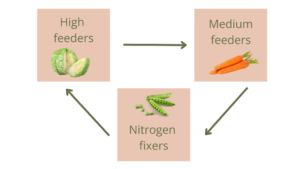
Root vegetables (carrots, parsnips, beetroot, onions)– leaf vegetables and brassicas (lettuce, spinach, cabbages) – fruiting vegetables ( tomatoes, potatoes, pumpkins, cucumbers)
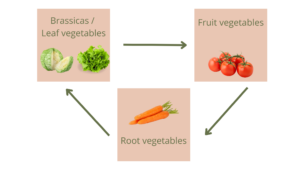
Nightshades (Tomatoes, peppers, eggplants, potatoes) and Curcubitaceae (Cucumbers, melons, pumpkins, zucchini) – Legumes (peas, beans) – Brassicaceae (cabbages, radish)
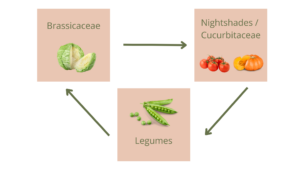
4-year crop rotation plan
Leafy vegetables and brassicas – fruiting vegetables – root vegetables – legumes
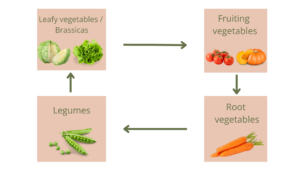
Nightshades and Umbellifers (tomatoes, pepper, eggplant etc. and carrots, celery, parsley etc.) – Poaceae (corn) and Asteraceae (lettuce, salsify) – Brassicaceae (cabbages, radish) and Liliaceae (onions, chives, garlic) – Cucurbitaceae (cucumbers, melons, pumpkins, zucchini) and Legumes (peas, beans)
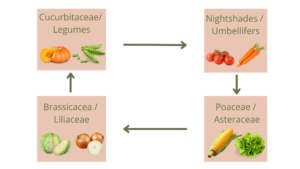
Crop rotation and succession planting
Most vegetables don’t occupy the garden for the whole season, so we plant fast-growing crops before or after them. This is called succession planting and we also need to observe the rules of crop rotation here. It’s not good to plant late cauliflower after early broccoli, for example, because, as you know by now, they are from the same family and category and thus have the same nutrient requirements and attract the same pests and diseases. You’ll find more details on succession planting over here.
A cleverly planned succession of vegetables will leave your soil healthy and nutrient-rich, while your plants will benefit from one another and produce a great harvest.
Here are some examples of succession planting that take crop rotation into account:
- Plant late cabbage varieties, lettuce or onions after potatoes
- Cultivate radishes, lamb’s lettuce, spinach or kohlrabi after broad beans
- When you’ve harvested garlic, plant strawberries on that bed or sow broad beans; the year after that the bed is ready for heavy feeders like cabbages or Cucurbitaceae.
- After onions, you can sow endives, radicchio, beetroot, or Swiss chard.
- Plant bush beans, spring onions, Swiss chard, spinach or late cabbage varieties after fennel.
How to rotate crops in small gardens
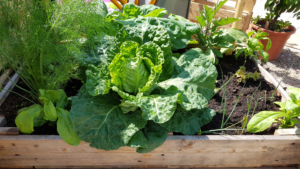
You may only have a small space for vegetable gardening and that’s okay. In fact, most home gardens are not very large and that may make it difficult to rotate and effectively space apart different veggies. Nevertheless, you should still try to do it as best as possible to keep pests and diseases at bay and help maintain soil fertility.
Here are a few tips on how to rotate crops in small gardens:
Raised beds
If you have only a small space for gardening, building three to four raised beds may be a good idea. That way, you can rotate your crops according to one of the plans above while having a solid barrier between each area, although they may be close to one another.
Container gardening
Using containers is similar to raised beds and I especially recommend it for vegetables that are prone to diseases like tomatoes. Like with raised beds, there is a physical barrier between the containers and the rest of your vegetable garden and the risk of spreading diseases across beds is minimal.
Scattered beds
Who says that all vegetables must be grown in one place? Admittedly, when it comes to watering or harvesting, it’s easier to have all vegetables in the same location, but you can also create “pockets” and grow veggies on beds scattered around your garden. That way, it’s easy to rotate crops and make sure that diseases do not spread.
Advanced Crop Rotation Strategies
Integrating cover crops into your rotation schedule

Cover crops are great for replenishing nutrients while at the same time covering the soil. Cultivating cover crops counts as fallow in the vegetable garden, whether it’s during the whole season or just a part of it. However, cover crops also belong to plant families and can be “siblings” of our veggies. It’s important to know, therefore, who is related to whom to avoid leaching the soil and spreading pests and diseases.
Here is an overview of common cover crops and their family membership:
Family: Legumes
Members: Cowpea, red clover, white clover, crimson clover, sun hemp
Family: Brassicaceae
Members: Rapeseed, yellow mustard, oilseed radish, field turnip
Family: Poaceae
Member: Winter wheat, winter barley, rye, oats
Make sure to consider these family memberships when planning your crop rotation. For example, don’t grow any cabbages in a bed where brassica cover crops like rapeseed or mustard were grown before. Also, cultivating corn after, for example, winter barley or oats may be difficult.
Companion planting and crop rotation
Companion planting means planting those vegetables together (that is alternating or in close proximity to each other) that help each other grow better. For example, corn and beans are amazing plant buddies: corn provides a natural support for bean vines to climb, while beans add nitrogen to the soil, which helps corn grow stronger. Another great pair is tomatoes and basil – basil helps keep pesky insects away from tomato plants, acting like a natural bodyguard. If you want to learn more about companion planting, you’ll find a comprehensive guide here.
When we use companion planting within our crop rotation system, we’re basically creating a superhero team of plants. Each plant brings its own special power to the garden. Some plants, like marigolds, can chase away harmful insects, while others, like clover, can improve soil health by adding nutrients. This method is not just smart gardening – it’s a way of working with nature instead of fighting against it, helping to grow healthier crops and take better care of the earth.
Companion Planting in Crop Rotation: Four Strategic Examples
- Nitrogen-Fixing Legume Rotation with Heavy Feeders
Rotation Sequence:
- Year 1: Plant bush beans or peas (nitrogen-fixing legumes)
- Year 2: Follow with heavy-feeding corn or brassicas
- Companion Planting Strategy:
- Interplant beans with carrots and radishes
- Plant pumpkins with corn to cover the soil
- Benefits: Beans naturally enrich soil with nitrogen, supporting next year’s nutrient-hungry crops
- Brassica and Allium Rotation with Root Crops
Rotation Sequence:
- Year 1: Grow cabbage family crops (broccoli, kale etc.)
- Year 2: Plant root crops like carrots and parsnips
- Companion Planting Strategy:
- Interplant onions and garlic with carrots to deter carrot flies
- Use calendula as a trap crop to attract beneficial insects
- Benefits: Breaks pest cycles, improves soil structure, reduces disease pressure
- Nightshade Family Rotation with Soil-Building Crops
Rotation Sequence:
- Year 1: Tomatoes and peppers
- Year 2: Cover crops or green manure (like clover or buckwheat)
- Companion Planting Strategy:
- Plant basil near tomatoes to improve flavour and repel pests
- Grow marigolds around nightshades to deter nematodes
- Benefits: Restores soil health, interrupts pest and disease cycles
- Cucurbit and Herb Companion Rotation
Rotation Sequence:
- Year 1: Cucumbers, squash, and melons
- Year 2: Grow nitrogen-fixing legumes
- Companion Planting Strategy:
- Plant dill and nasturtiums with cucumbers
- Interplant radishes to deter cucumber beetles
- Benefits: Enhances pollination, natural pest control, soil nutrition improvement
How do you know if your rotation is working?
How would you know if your rotation system is working? Well, first of all, take a close look at your soil. It should have a deep brown to almost black colour, which indicates an increased amount of organic matter and a high nutrient content.
Secondly, track pests and diseases over several seasons and check if they have at least not spread, at best diminished.
The harvest yield, of course, is also a good indicator of whether your rotational system works. A good harvest shows good, rich soil which will be a result of a well-working crop rotation.
Start crop rotation now!
Implementing crop rotation in your vegetable garden is one of the smartest decisions you can make for long-term gardening success! The guidelines in this post show you what to do to keep your soil healthy, diminish pests and diseases and have a great harvest year after year.
And remember that even small gardens benefit enormously from crop rotation!
Start planning your garden’s crop rotation right now, and I promise you that by this time next year, you’ll be amazed at the difference in its productivity and health! Your soil will be replenished with nutrients, you’ll have healthy plants and above all, you’ll gather an abundant harvest.
Wanna read more about vegetable gardening? These articles may also interest you:

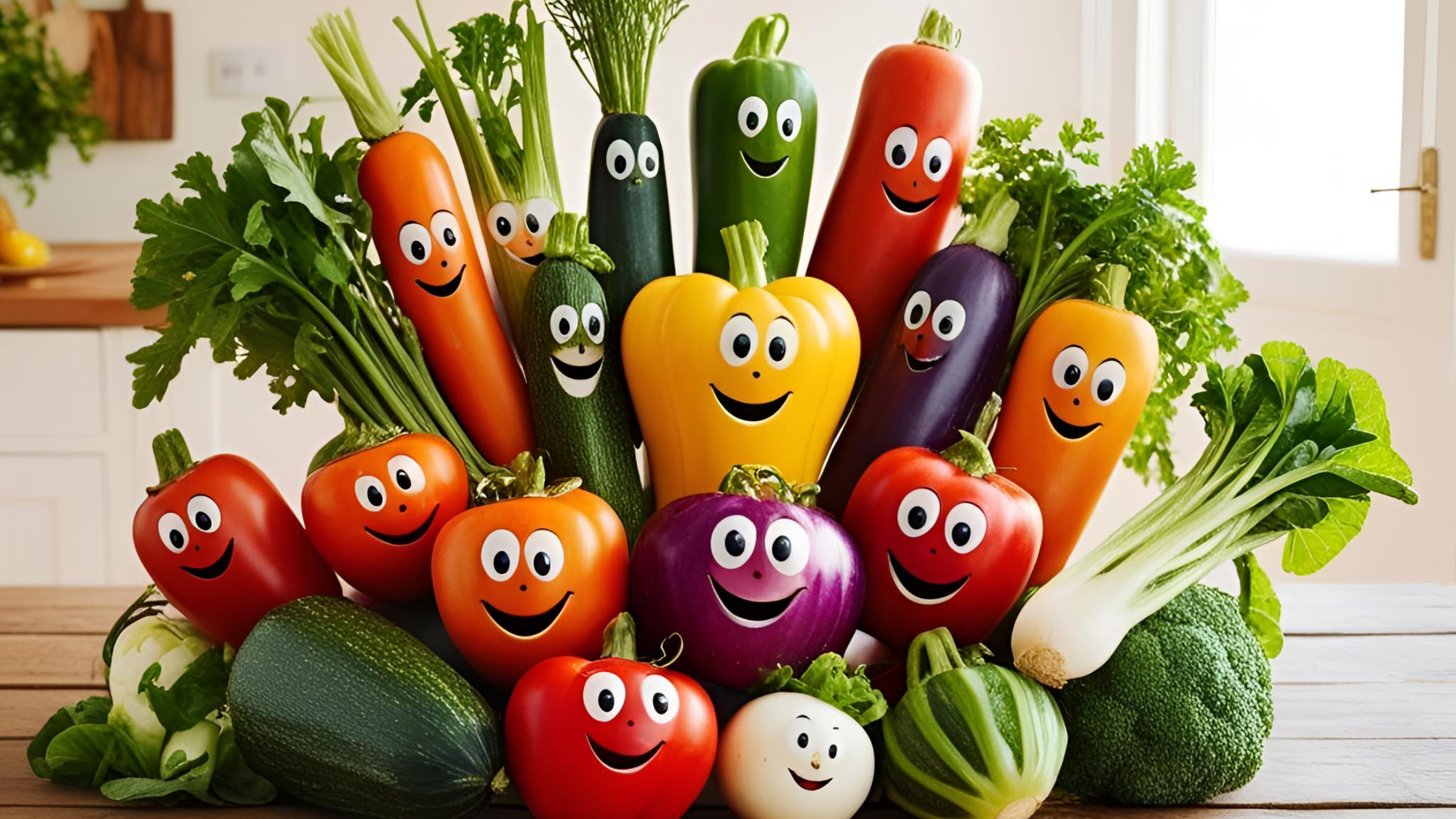
0 Comments